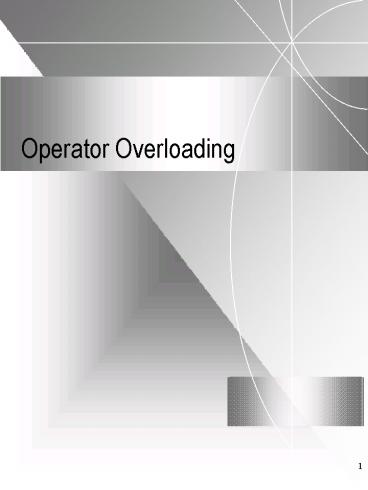Operator Overloading - PowerPoint PPT Presentation
Title: Operator Overloading
1
Operator Overloading
2
Syntax
- The general syntax is
- friend returntype operatorltoperator symbolgt
- ( ltparametersgt )
- ltstatementsgt
3
Syntax
- The number of arguments in the overloaded
operators argument list depends on two factors - Whether its a unary operator (one argument) or a
binary operator (two arguments). - Whether the operator is defined as a global
function (one argument for unary, two for binary)
or a member function (zero arguments for unary,
one for binary the object becomes the left-hand
argument).
4
Operators that cant be overloaded
- All operators can be overloaded except for the
ones below - The member selection operator - .
- The pointer to member dereference operator - .
- Scope access/resolution operator -
- Conditional operator - ?
- Also, there are no user-defined operators and you
cant change the precedence rules.
5
Overloaded operators as member or non-member
functions?
- The decision is based on what argument(s) is
needed by the operator. - In general, if it doesnt make any difference,
they should be members, to emphasize the
association between the operator and its class. - When the left-hand operand is always an object of
the current class, this works fine. - Sometimes you want the left-hand operand to be an
object of some other class, then the overloaded
operator cannot be a member function.
6
Some tricky operators
- Increment and decrement operators
- a (a pre-increment) generates a call to
operator(a) - a (a post-increment) generates a call to
operator(a,int)for non-member functions. - The member function versions, would be
- Boperator( ) and
- Boperator(int)
- Note a dummy value is passed by the compiler to
distinguish (generate different signatures) the
two versions.
7
Some tricky operators
- The assignment operator
- Defining the assignment operator has a lot in
common with defining the copy constructor and the
destructor. - List Listoperator( const List b )
- if( this ! b) //check for self assignment
- free()
- copy(b)
- return this
8
An example
- Lets look at our example implementation of the
class Values
9
Arguments and return values
- Guidelines
- Return by value as const
- The return value optimization

